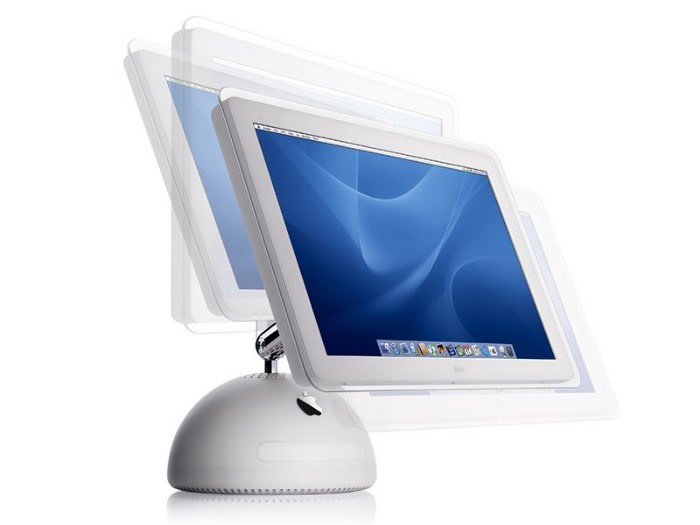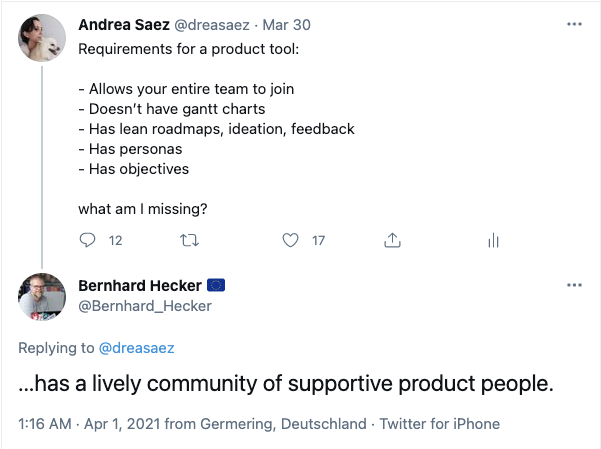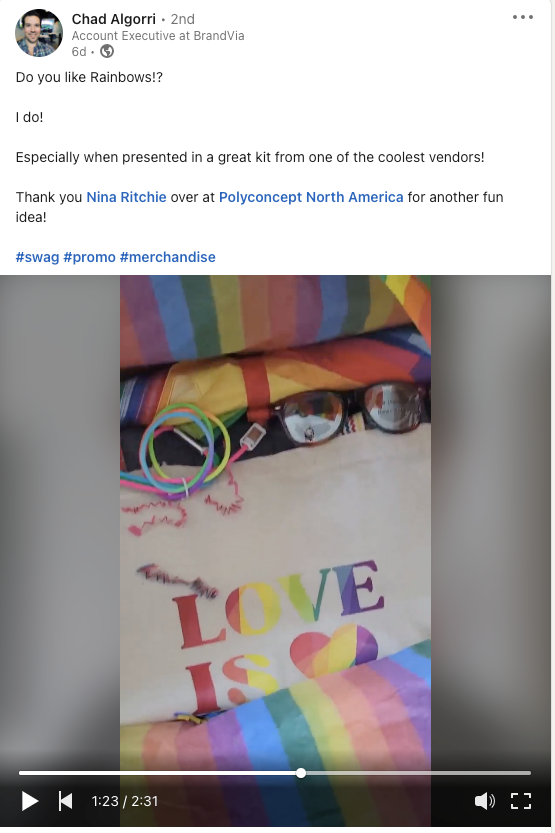
I want to start off this blog post by addressing the wording of the question itself.
Should you be using NPS to measure customer loyalty?
Let’s take a step back here…
Do you measure loyalty in your life? Do you have a board of leaders and laggers to see who are the most loyal people and see who will do things for you in the future?
Yeah, didn’t think so.
So why would you take the same approach with your customers?
NPS (Net Promoter Score) is an outdated metric, particularly for SaaS businesses.
Let’s take a deep dive into it and understand how to do things better.
The History of NPS
Before we get to how to do things better, it’s important to understand how NPS actually started.
NPS was invented by Fred Reicheld and the Bain and Company team in 1996 and wide popularized by Harvard Business Review in 2003. Its aim was to understand customer satisfaction and loyalty in businesses.
For reference, while SaaS has been a thing since the late 1990s, the modern cloud versions we know today didn’t really hit a hype until the late 2000s. This means NPS was primarily focused on brick-and-mortar stores such as Ogilvy, although it was also adopted by some big software companies such as IBM.
Now take a moment to think about it though. Back then, we still had fairly clunky computers and the world wide web was still being adopted.

Apple was still gaining traction in its own right, and many didn’t know the benefits of going for the modern rotating-screen G5 machines. So would you ask a family member about which computer is best to buy? Most likely, yes. (Mind you, I am still being asked this question by family members in 2021.)
So when it comes to personal shopping and consumer items, then perhaps NPS stands the test of time.
I am more than happy to recommend personal products from brands such as The Ordinary and Lush, but would I do the same with a SaaS product I use for work…?
Breaking down NPS
The Question
Let’s think about this for a minute, so let’s look at the question being asked in NPS surveys.
Would I recommend a SaaS product I use for work to a friend?
My friends don’t even know what I do for a living! My family still thinks I “work in tech.” So no, hard pass on that.
If we were to adapt NPS to more modern situations, perhaps the right wording would be — How likely are you to recommend our product to a colleague?
Personally, the answer is still no. I don’t sit there and talk about products I use with colleagues. If I have the chance to speak to someone at another company, I’m going to ask for practical advice and tap into their personal knowledge, not ask about products they use.
But putting that aside for a minute, there’s a larger issue with the question being asked.
NPS puts pressure on what the customer can do for you, instead of what you can do for the customer.
You’re only just developing a relationship with a customer and almost right away you’re already asking what they can do for you.
It takes more than 3 months to create true loyalty and develop a relationship (particularly a working relationship) and give customers a chance to understand how your product solves a problem for them. So why are you asking them to go out and do something for you?
We’ll get back to this point and how to improve on this later.
The Follow-Up
Almost all NPS surveys have a follow-up to the 0–10 scaled rating, generally asking why someone have a particular scoring, as well as a request to have the customer give a review on some software review site like Capterra (who even reads those!?)
I’m actually not going to judge the scoring part, it’s the right way to approach this. This would give you both the quantitative and qualitative aspects, but…. the problem is, people take this at face value and see the number as a linear score rather than a trend.
Any metric should be looked at with two aspects in mind:
What problem are you trying to solve by tracking the metric?
How does the metric change over time?
The second is particularly important in this scenario, as what tends to happen is once someone gives a positive score, many companies stop triggering their NPS surveys as they believe they’ve already gotten the positive result they were looking for.
This is a fallacy.
Just because someone enjoyed your product in the first 3 months, or even in the first 3 years, it doesn’t mean that is a constant factor. (Something I have in fact proven myself with a not-to-be-mentioned support tool I started to hate after 11 years of use and now will actively not recommend.)
The Measurement
There are others that have written more details on why the actual measurement fails, so instead, I’ll point you to some awesome number-oriented reports here:
👉 At least two reasons why you probably shouldn’t use NPS
What NPS fails to consider
While companies are hyper-focused on their vanity metric and how they can get people to recommend things for them, they fail to consider the biggest gap in the system: those that didn’t answer.
Are you checking in with those customers that ignored your NPS survey?
Are you checking in with those that gave you a positive answer previously?
Be aware of potential false positives.
Remember those customers that haven’t answered.
Just because they haven’t answered, it doesn’t mean they are at risk of churn. It just means they have no one to recommend your product to.
If they did recommend your product previously, it doesn’t mean they’re forever satisfied with it.
So how can I get people to recommend my product?
I’m going to go back to a very important statement I made earlier:
Instead of putting the focus on what the customer can do for you, focus on what you can do for your customer.
With that in mind, there are a few approaches you can implement.
Invest in a community
Facilitate conversations between your team and customers, create engagement opportunities, and tap into insights. These are just some of the positive aspects of having a community.
Having a supportive community of people can help drive adoption and create opportunities for other members to learn from each other.

Your community can also be a fantastic place to look at usability testing, tap into conversations and uncover possibilities for new problems you might not even have been aware of otherwise.
💡 Top Tip: Product adoption doesn’t just happen in interactions within a system. It also happens in conversations and in developing relationships. Tap into that!
Invest in education
The most successful companies go beyond just the typical ‘knowledge base’ setup. They invest in ongoing education through different types of medium — be it written, through videos, or through interactive components such as walkthroughs and webinars.
Why?
Because education and documentation aren’t static. It should adapt and change as both your product and your customers grow in maturity.
If you’re constantly releasing updates, clearly your documentation should be updated too.
People learn in different ways. Some like to read, others are more visual, and others like to learn by doing. Offer those alternatives.
Ongoing education puts you in a position of being a leader in your space. Don’t just be a company that does things, be the company that is willing to educate others as to how to do things better.
Invest in outcomes, not output
If you want to increase customer loyalty, focus on what the user is trying to achieve by using your product and then find ways to help them find that success.
What does this mean?
Find the right customer fit by asking about their outcomes and goals.
Take the time to run discovery and experiment with possible solutions before you tie yourself to an output nobody may actually want.
Constantly check in with them and ask if they’re reaching their goals and outcomes. Are they actually tapping and maximizing their usage of your product? If not, how can you make things easier for them?
A little less focus on “do you like this shiny new feature” and a little more focus on “does this feature help you achieve your goals and solve your problems?”
But I really want to measure things
Ok, so you want a tangible way of measuring this instead, that’s cool.
Good news, you can actually still do this — but not at the expense of everything I’ve already mentioned.
The alternative to NPS is CXS, Customer Experience Score (not to be confused with Customer Effort Score.)
I think this is the third time I am saying this, but it’s actually important:
By putting the focus on the customer rather than on your business, you change the conversation from what improvements and problems you can solve for them, thus opening the lines of communication and actually increasing loyalty by showing you are willing to act on the feedback they give you.
How Customer Experience Score Is Calculated
CXS is not a static one-time metric. You should constantly be looking at trends and patterns instead of a single number at a given point in time. In the words of Jared Spool, you can’t reduce experience to a single number.
The CXS Score asks a very simple question: How has your experience with our product been in the last x days?
By allowing the customer to answer from a 0–10 scale, you can break this down by looking at the allocation of votes:
0–4 = Not great
5 = Neutral
6–7 = Satisfied
8–10 = Extremely Satisfied
As with any scale, it’s always important to follow this up with ‘why’ or ask for further feedback to also get the qualitative aspect of the score.
How can we do better?What can we do better?How can we improve your experience?
Let’s say a customer answers 8 on their first CXS, and then gives you a 7 and a 6. This very clearly indicates there’s a problem and you should immediately offer a call to discuss what is causing that response.
Likewise, if a customer gives you a low score and then it starts improving, it’s a clear indication their experience is getting better.
The Reward Funnel
The key aspect of CXS is how you reward or respond to those changes over time. Put your customers on a reward funnel that counters their experience recorded.

Here’s an example of a customer that offered potentially gave a high score:
3 scores of 8 over 270 days = Send them some cool swag
Another score of 8, 90 days later = Ask them for a testimonial
A score of 7, 90 days later = Ask them for a case study and why there was a change, offer them some free marketing!
Here’s an example of a customer that offered a low score but then improved:
Initial score of 5 over 90 days = Offer them a call
Score of 7, 90 days later = Offer them swag
Score of 7, 90 days later = Ask them for a testimonial, and offer them a call for further feedback.
By constantly rewarding their interactions with you, you can immediately increase loyalty and turn them into product champions simply by improving their experience with you over time.

And there it is friends!
If you made it this far, thank you for reading.
If you made it this far and didn’t really read, let me give you the TLDR:
NPS puts focus on what the customer can do for you, not what you can do for your customer.
Loyalty isn’t measured in numbers, it’s measured in actions.
Invest in community, education, and outcomes to drive success for your customer.
Production adoption isn’t just based on on-screen interactions, it’s based on experiences that often lie outside of the product itself.
Look at trends and check into progress, adoption and outcomes with the CXS score.
Want to learn more? Thanks to Daniel Kyne for this little resource by Noam Segal: https://www.npsistheworst.com/

Andrea Saez

Read also



Create effective product strategy

Experience the new way of doing product management




